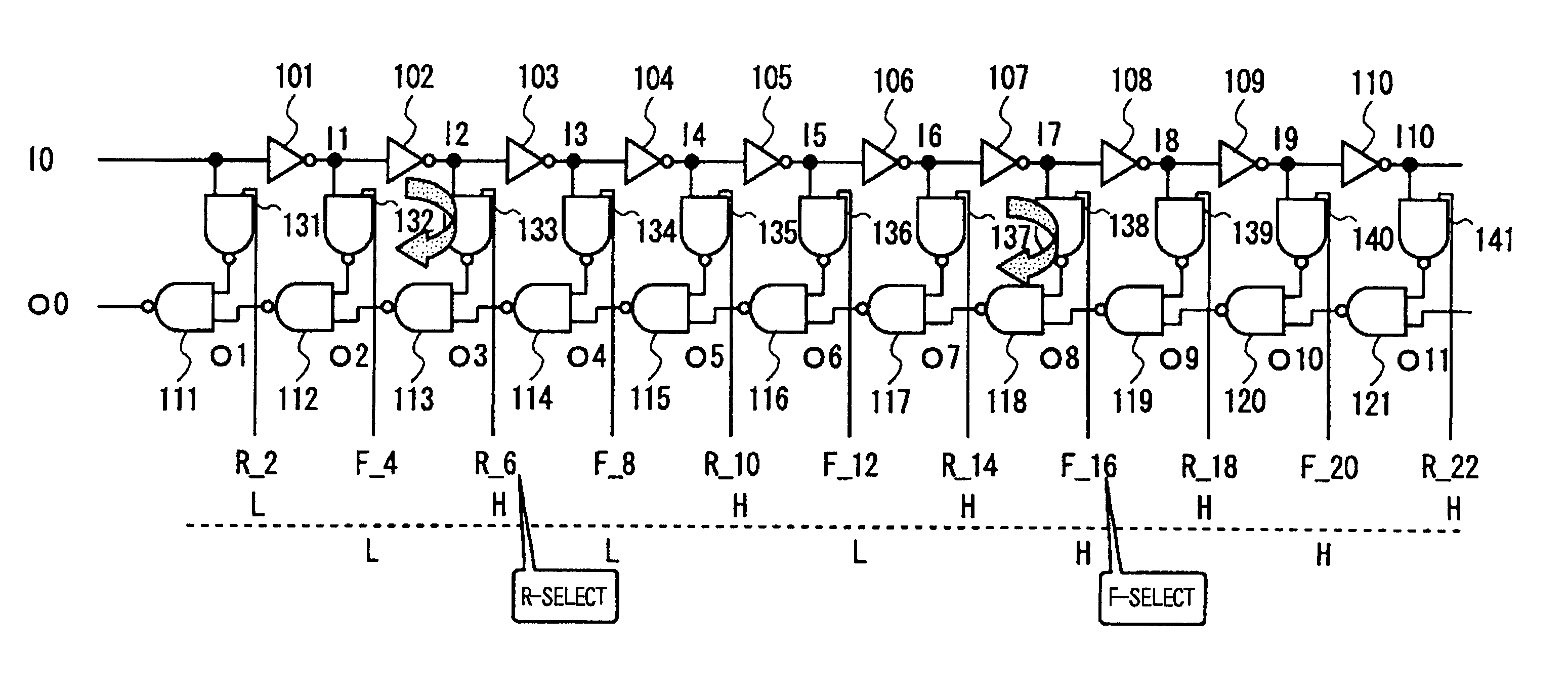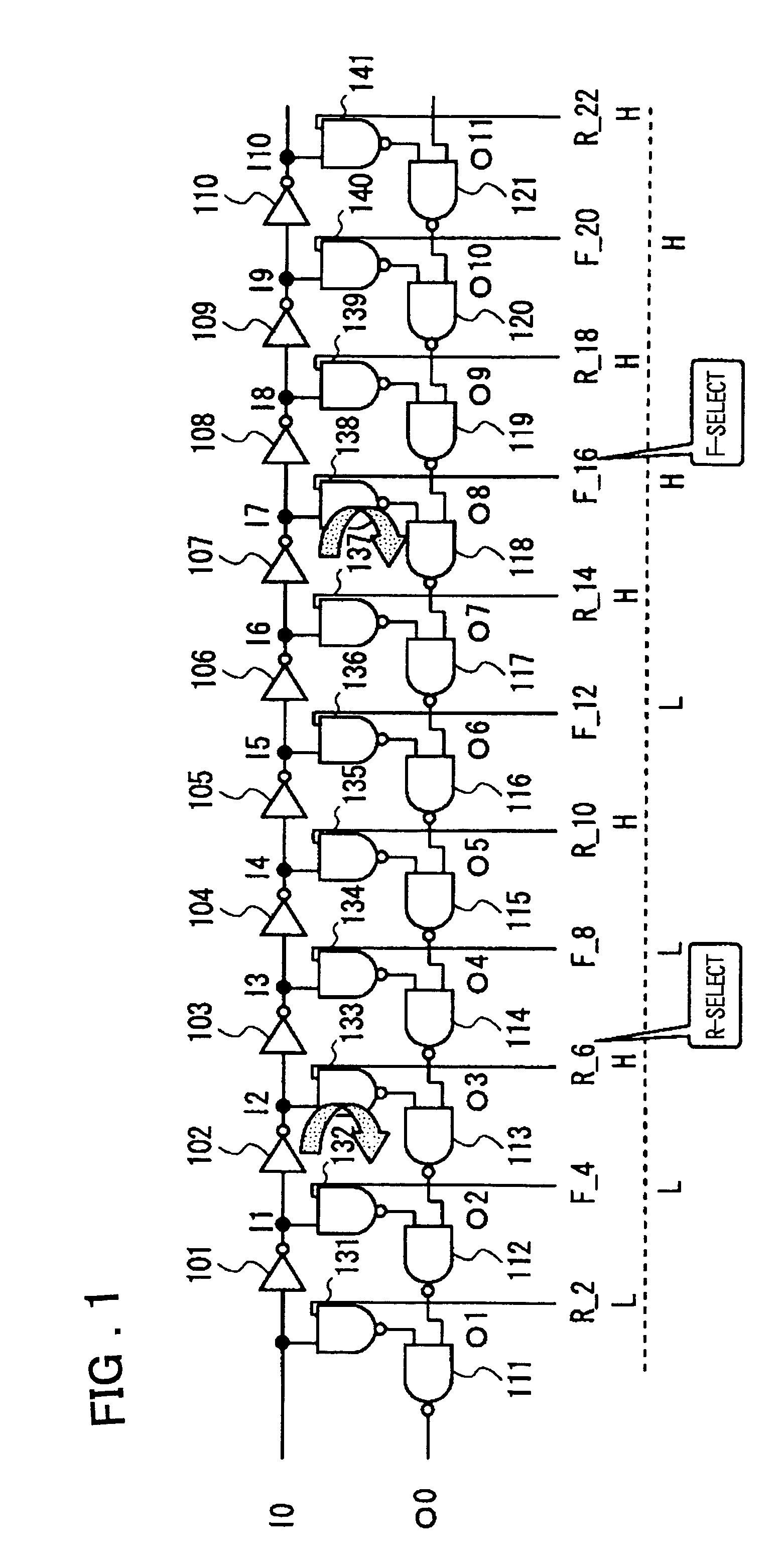Delay circuit and delay synchronization loop device
a delay synchronization loop and delay technology, applied in the field of delay circuits, can solve the problem of not being able to set the rise or fall of output clock signals independently, and achieve the effect of small area and low jitter
- Summary
- Abstract
- Description
- Claims
- Application Information
AI Technical Summary
Benefits of technology
Problems solved by technology
Method used
Image
Examples
Embodiment Construction
[0055]The preferred mode for carrying out the present invention is now explained. The present invention comprises a delay line circuit in which the propagation path for the rising edge and that for the falling edge of an input signal are independently selected to provide for a variable duty ratio. By this delay line circuit, the DLL of, for example, x.5 mode (1.5T mode if x=1) may be realized.
[0056]That is, if a mode (1.5T mode) in which a data output DQ by the delay from the rising edge (CLK↑) is synchronized with the fall of the clock signal (CLK↓) (see “Rise propagation”) and the delay of the data output DQ by the delay from the falling edge (CLK↓) is synchronized with the rise of the clock signal (CLK↑) (see “Fall propagation”), as shown in FIG. 3C, can be set, the (maximum) propagation time may be shortened to diminish the jitter.
[0057]More specifically, a delay circuit according to a preferred embodiment of the present invention includes a first delay line circuit having a plu...
PUM
 Login to View More
Login to View More Abstract
Description
Claims
Application Information
 Login to View More
Login to View More - R&D
- Intellectual Property
- Life Sciences
- Materials
- Tech Scout
- Unparalleled Data Quality
- Higher Quality Content
- 60% Fewer Hallucinations
Browse by: Latest US Patents, China's latest patents, Technical Efficacy Thesaurus, Application Domain, Technology Topic, Popular Technical Reports.
© 2025 PatSnap. All rights reserved.Legal|Privacy policy|Modern Slavery Act Transparency Statement|Sitemap|About US| Contact US: help@patsnap.com



